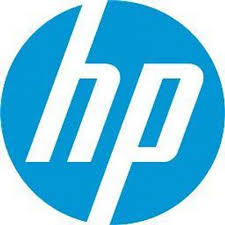This blog post is an excerpt from GovLoop’s recent guide, “Your Roadmap to IT Modernization.“
As agencies continue to modernize, leaders are looking for new and innovative ways to promote efficiency to drive their organization’s missions. Whether it’s eliminating physical data centers or updating servers, the public workforce is quickly learning that they need to leverage new technologies in order to do their jobs effectively.
One significant way that agencies are fostering modernization is through mobile solutions. The ability to seamlessly connect field workers back to headquarters and get work done anywhere, at any time and on any device, offers organizations the unprecedented ability to meet citizen needs. To learn how agencies can adopt a holistic mobile strategy, GovLoop sat down with Andy Nuttall, Director of Strategy for HP Mobility, an information technology enterprise that specializes in mobile solutions.
Nuttall explained that the need for mobility is driven by three main trends that we are currently seeing in the workforce. The average age of employees is getting lower, workers are becoming less tied to the office and collaboration is becoming the dominant workstyle.
However, for government organizations, there are some inherent challenges in adopting a mobile solution. While limited budgets, legacy systems and cultural barriers are part of the reason that agencies struggle making the shift to mobile, Nuttall emphasized that the most crucial challenge for agencies is simply making the most out of a transition to mobile.
“When implementing a mobile solution, agencies must specifically work on integrating operating systems and managing employee expectations of the mobile environment in order to meet the needs of an increasingly employee-centric workforce,” Nuttall explained.
Despite these challenges, new technology is opening up opportunities to solve these problems. “When we look at the speed and processers of today’s mobile devices, we are experiencing breakthroughs in device capabilities, Wi-Fi speeds and availability, and LTE speeds across the globe,” Nuttall said. These trends are opening the market and allowing capabilities that were previously only available across multiple devices to be consolidated into one device.
One example of a consolidated mobile solution is HP’s Elite x3. The mobile device combines the power and productivity of a PC with premium smartphone capabilities so public sector workers can do work anytime and anywhere. The value in the Elite x3 comes from its ability to function as a smartphone but also to be docked to give a full screen PC experience.
“This allows for a high return on investment for budget stretched organizations because you can have a phone that also offers the PC experience as well when coupled with an optional dock,” Nuttall explained.
Not only do such solutions offer a consolidated platform, but they also offer users ease of management through a single Windows operating system. The three-in-one device allows users to employ it as a smartphone, a small tablet and as a PC when docked. Additionally, the device ensures information security through features like multi-factor authentication and biometric scanning capabilities.
Ultimately, tools like the Elite x3 enable a more mobile public sector workforce by acting as the center point of operations. Nuttall gave an example of a police force using the device to streamline processes.
“If you put an Elite x3 in an officer’s hands, they can take notes and write reports at the scene, as well as take photos of traffic accidents and record their daily workflow,” Nuttall said. “However, they can also go back to their police car and dock the Elite x3 to finish writing their notes in more detail instead of having
to use a separate laptop in the car or go back to the police station to rewrite their field notes.”
This versatility is critical for the public sector as it no longer has to spread its workflow across multiple devices and physical locations. Putting a single device at the center of a government employee’s workflow significantly increases manageability and efficiency while stretching IT budgets further.
Looking forward, Nuttall is optimistic that consolidated mobile solutions will continue to permeate the government and drive efficiency. Nuttall concluded, “We think the opportunity for mobility can really transform how the public sector works. We are really just at the beginning in terms of what these devices are capable of.”






Leave a Reply
You must be logged in to post a comment.